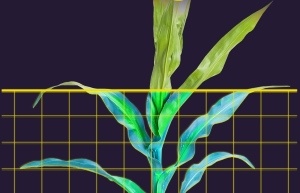A recent study published in the Computers and Electrics in Agriculture journal by Yi Lin (2015) discussed the potential of LiDAR technology in plant phenotyping. Although current limitations of the LiDAR technology are well known, the review study focusses on the future potential of the technique, based on continuous research and development.
According to the study, high density LiDAR, Full-waveform LiDAR and Hyperspectral LiDAR are the LiDAR techniques currently being researched and developed that show great potential. In particular, high density LiDAR could measure crop density using 3D field reconstruction, where low density did not have significant results. Multi-wavelength laser systems are thought to improve chlorophyll concentration estimations and the hyperspectral LiDAR could map plant ‘color’ and thereby physiological attributes by linking chlorophyll and other pigments to photosynthesis. These developments, when overcoming associated challenges, in combination with the further development of phenotyping techniques could result in the next step in plant phenomics.
WPS continuously monitors market developments and technological advancements, whilst further developing our turnkey high-throughput phenotyping solutions, to push the industry forward. Contact us for more information about LiDAR technology.
Read more about the possibilities of imaging technology for your business, RGB Imaging.
Lin, Y. (2015). LiDAR: An important tool for next-generation phenotyping technology of high potential for plant phenomics? Computer and Electrics in Agriculture, 61-73. Retrieved from: http://agri.ckcest.cn/ass/NK006-20151130005.pdf

.png?height=175&name=Plants3%20(1).png)